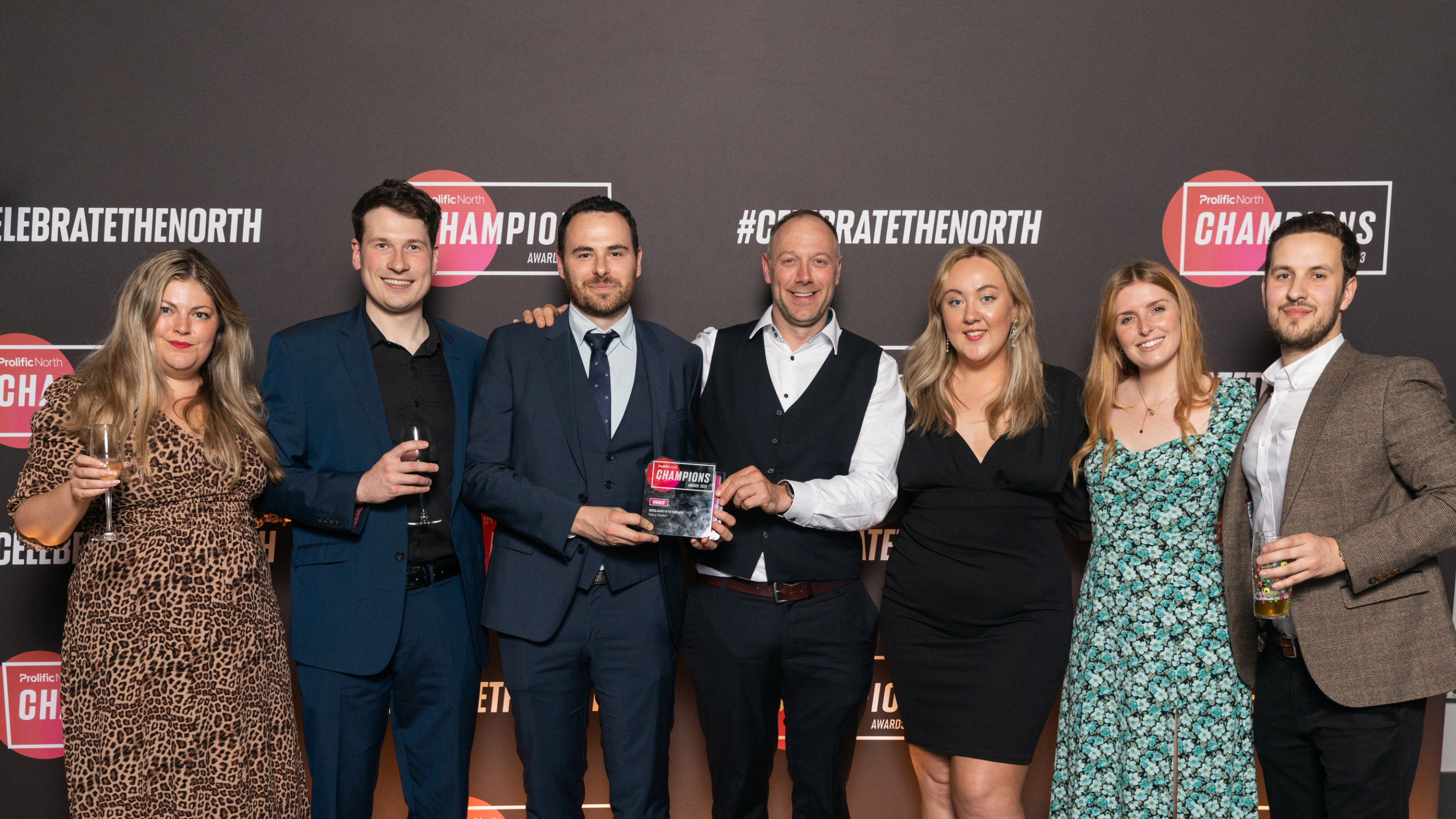In recent years, the rise of digital marketing has shaken up the marketing landscape, leaving more traditional tactics out in the cold.
Unlike traditional marketing, which focuses on mass-broadcasting techniques, (think print, radio and TV), digital marketing provides advanced targeting capabilities and brings measurable results to the table. It's all about understanding and pinpointing your audience, personalising your messaging, and keeping tabs on campaign performance in real-time. Then, continually testing and refining campaigns to maximise your results.
And that's why digital marketing has quickly become a must for businesses looking to grow both on and offline. Its flexibility, adaptability and ability to help businesses stay ahead of changing consumer trends, triggers and behaviours, have made it the dominant force in marketing today.

A pivot to Direct Response Marketing
A recent digital marketing trend — and something which we’re seeing brands adopt more and more often — is Direct Response Marketing (DRM).
DRM is all about creating compelling marketing comms that drive your audiences to take immediate action. Whether that’s clicking a link, making a call, or adding a product to your basket, it's all about getting results at the click of a button; fast-tracking audiences straight to the decision phase with little room for dialogue in between.
Yet, over time, we’ve found that DRM has caused brands to become fixated on ROI and short-term gains, to the point where the role of creative and emotional standout has been sidelined. Digital marketing has become overly scientific.
Now, don’t get us wrong, ROI is very important; all businesses need to make a profit. And more often than not, data-driven campaigns will drive positive results. However, an obsession with scrutinising every penny and optimising everything for immediate conversion can sometimes come at the expense of driving standout, brand awareness and inspiring brand experiences.
In fact, we’ve seen a clear pivot away from brand building in recent times, with a common view being that it’s costly and hard to measure. And sure, if given a choice between doing X activity, where you can easily determine the impact, versus Y activity where you can’t, then why would you invest in the latter?
The problem here is that putting all your eggs in the DRM basket is myopic and can often lead to problems down the road. In fact, we’ve seen a number of brands get tied up with quick-win solutions, when ultimately the best approach would be to take a step back and consider the bigger picture. To think more sustainably about business growth.

Bridging the ‘Experience Debt’
Consider this, what is known by many in our industry as the ‘Experience Debt’. There’s commonly a big disparity between the offline and online experiences that audiences have with your brand.
This is especially prevalent within the luxury sector for instance; you go to a luxury store, and they want to keep you there. ‘Come in, take your time, explore, take in the story, indulge yourself in the smells, the atmosphere, and buy when you’re good and ready.’
However, often, the online equivalent of that brand is something more akin to what you’d expect of Amazon. One click buy now. No time for exploration or brand immersion, with little regard for indulging your curiosity to explore more than beyond what’s in front of you.
Yes, brands need to think differently when using the digital to enhance a brand experience, but the focus on immediate ROI and the intention to instantly convert all users as soon as they step onto a website has, for some brands, warped and distorted the buying experience, ironically at the mercy of brands where exploration and brand immersion is key to the decision-making process.
The importance of brand building
While sales-led marketing tactics (such as DRM) focus on immediate transactions, brand building takes a long-term approach by cultivating a strong and recognisable brand identity.
It's all about shaping perceptions, fostering trust, and establishing an emotional connection with customers. And, in a crowded digital marketplace, where competitors are never more than a few clicks away, a well-crafted brand can often be the differentiator; driving loyalty and advocacy.
Brand building is so important because it goes far beyond product features and price points. It builds a story and personality that resonates with your target audience. So whether it's through SEO, content marketing, PR or any other brand building activity, by investing in your brand you’re also investing in longevity, customer loyalty, and sustainable growth.

The role of AI in brand building
There’s no doubt about it; AI is the biggest hot-topic in the marketing industry right now. And, while there’s no shortage of speculation about the role it will play in the immediate and long-term future of marketing, we’d like to jump on the bandwagon and touch on how AI could impact your brand building efforts.
Ever since ChatGPT launched in November '22, joining forces with Bing shortly after in February ‘23, it sent shockwaves through the industry (and put the fear of god into Google). And after more than two decades of dominance, Google had to supercharge their AI model, Bard, to keep up.
Fast forward to May ‘23, when Google held their 15th annual developer conference, and guess what? AI stole the show. They introduced the Search Generative Experience, which aims to provide more informative and helpful search responses by leveraging AI capabilities, ultimately enhancing the search experience for users seeking specific information or recommendations.
Now here’s the kicker: if AI, in its essence, is programmed to understand the world as humans do, how will it know what types of products to serve audiences, if left to its own devices? The likelihood is that its algorithms will suggest brands with high levels of trust, reputation, authority and equity online. And this underlines the importance of brand building in future proofing your business online.
So, what’s the solution here? You may well be achieving great results from your DRM. But if your brand is seeking growth, then the most sustainable approach is to merge this (or any other sales-led activity) with your brand building efforts. This will help you maximise results both now and into the future, and help you grow your business one click at a time.
How to build your brand online
Now when we talk about brand building, we’re not necessarily talking about a fancy TV ad or a flashy billboard (although if part of a considered strategy, this could work well for you), we’re talking about how you communicate your brand to its audience, and the sum total of all experiences users have across your brand touchpoints.
With that in mind, here’s seven quick-tips to help you build your brand online:
- Know your audience: Understand who your audience is. What are their triggers, motivations, challenges, and influences, as well as their typical purchase paths? Without this knowledge, everything thereafter will be a guessing game at best.
- Tell stories: Connect with your audience on a deeper, emotional level by sharing authentic stories that align with your brand's culture, mission, vision and values. Consider the labour illusion; research suggests that people have a tendency to equate the perceived value of a product or service with the amount of visible effort put into it. This can lead to biases in pricing, as people may be willing to pay more for goods or services that appear to involve significant labour, even if the actual quality or value of the product is the same.
- Be consistent with your brand: Make sure that your brand's message, tone, and visual identity are consistent across all channels. This helps increase brand recognition and builds trust with your audience. Integration is key here; avoid using your channels in silo.
- Use social proof: Leverage testimonials, reviews, and case studies to showcase your brand's value and establish trust.
- Use influencers: Collaborate with influencers who align with your brand's values. Their endorsement can boost your brand's credibility and reach.
- Engage with your community: Build a buzzing social community. Listen and interact with your social following and encourage sharing of user-generated content.
- Produce high-quality content: Produce valuable, high-quality content that helps solve your audience's problems or enriches their lives in some form. This not only builds your brand's reputation but also improves your chances of being cited as a source in AI-generated answers.
Let’s get growing
As a digital experience and performance agency, our mission is to transform and grow brands digitally, ethically and sustainably, and to forever challenge expectations about what digital can deliver.
Our agency is guided by three strategic principles: we’re insight-led, people-powered, and action-focused. And we’re a business that does its business very much in alignment with our values.
Looking to drive sales through a direct response campaign? Or perhaps you’re looking to build your brand online? Or even better, you might be looking to marry the two. Whatever your brief, contact us today and let’s get growing!





